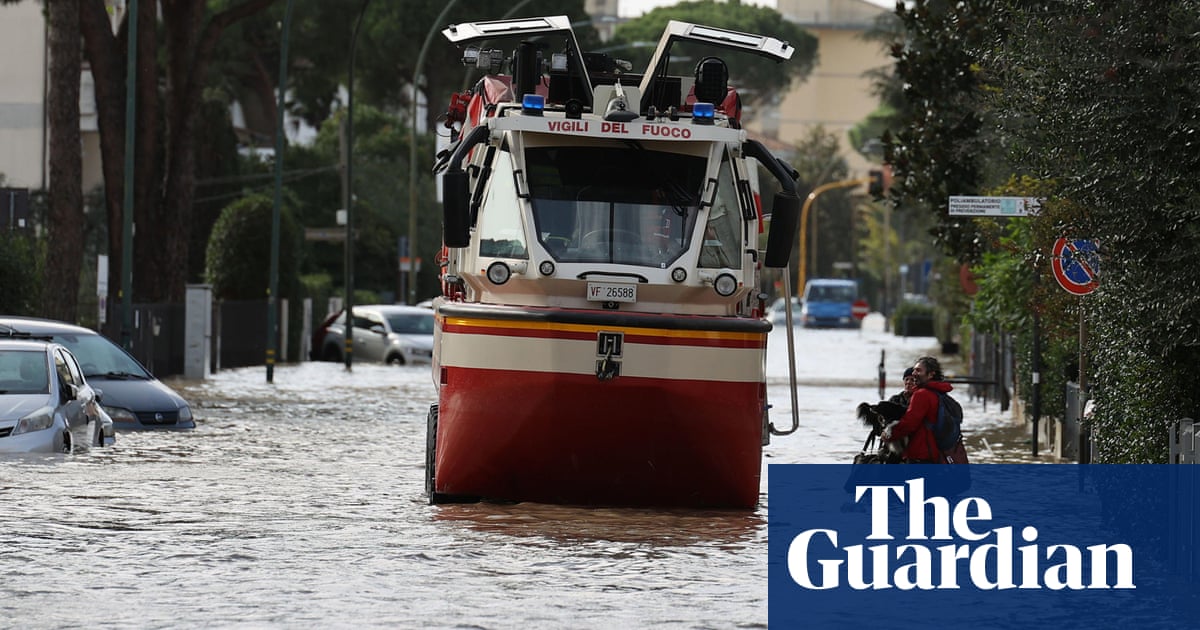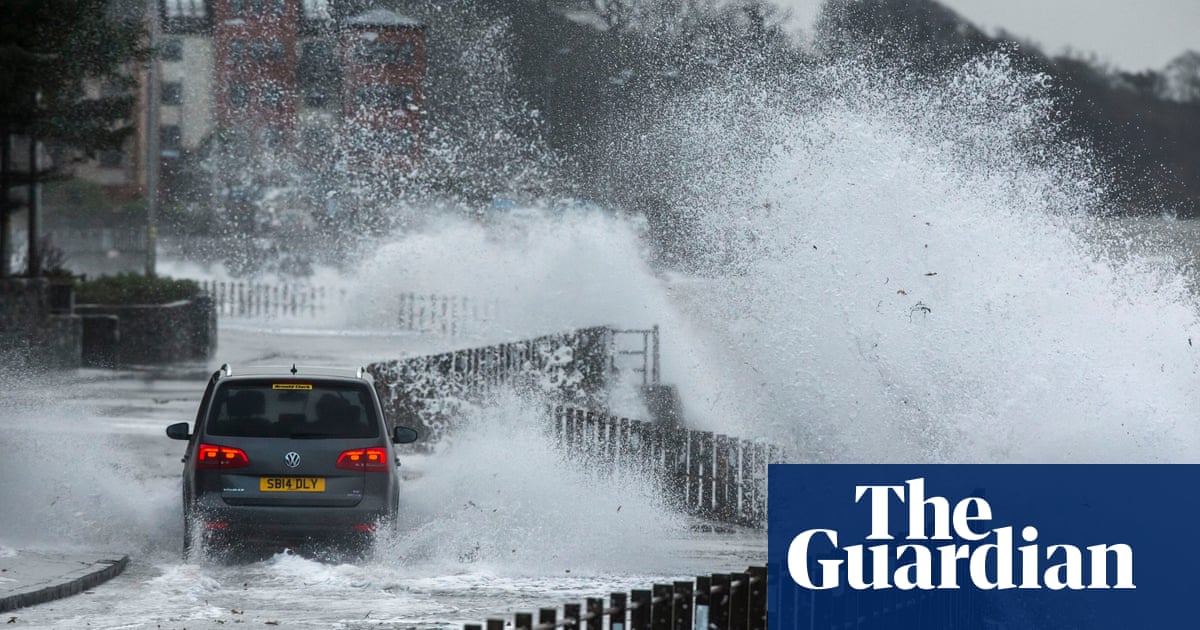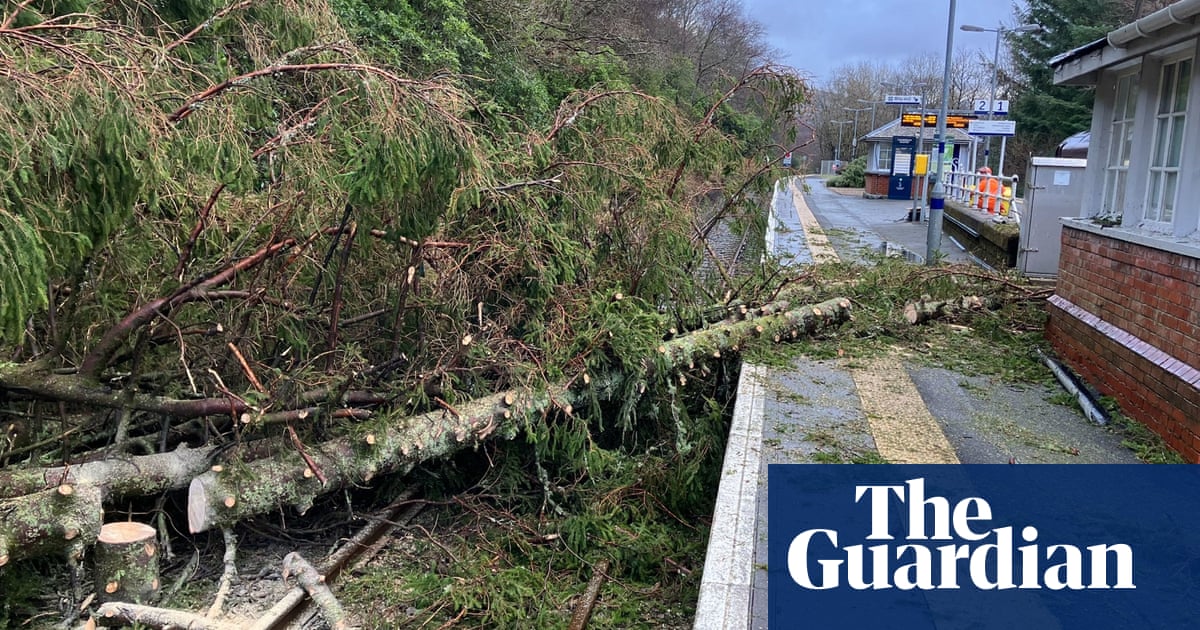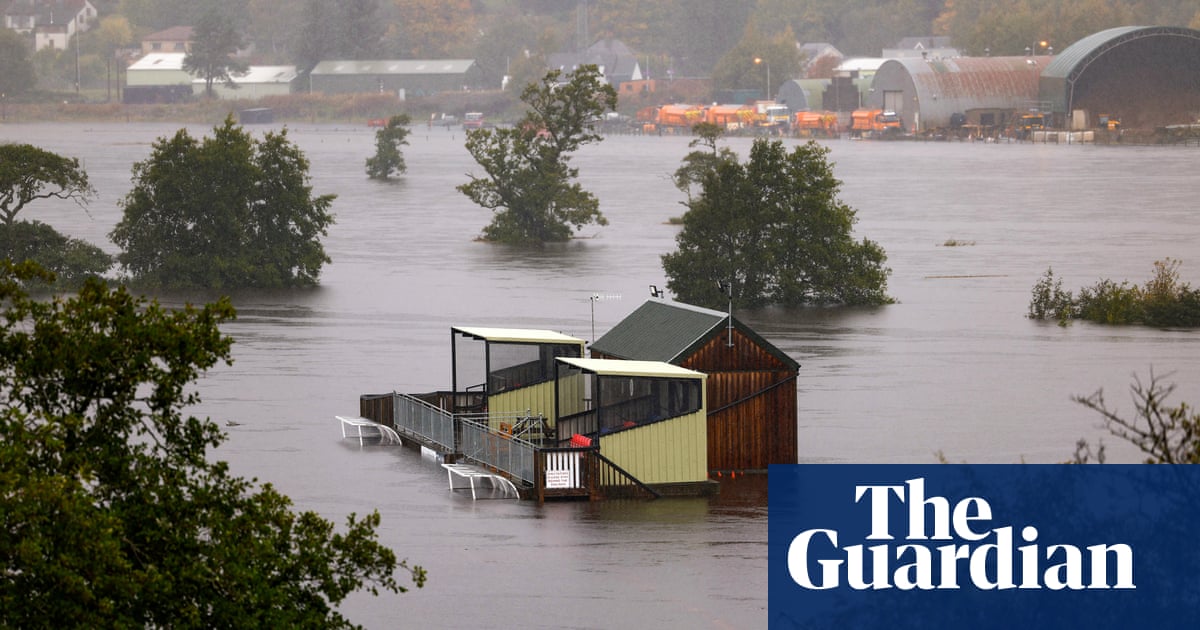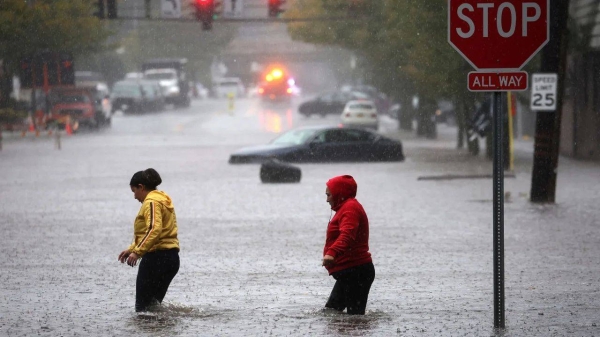
Typhoon Gaemi has made landfall on Taiwan’s eastern coast, unleashing torrential rainfall and whipping winds across the island that left three people dead.
On its path to Taiwan, Gaemi also exacerbated seasonal rains in the nearby Philippines, triggering flooding and landslides that killed six.
The superstorm hit Taiwan’s eastern Yilan county at around midnight local time Thursday (1600 GMT Wednesday), said the Central Weather Administration.
It had caused downpours and strong gusts across Taiwan before its arrival, killing one scooter rider in southern Kaohsiung city who was crushed by a falling tree, a woman in eastern Hualien who died after a wall fell on the car she was in, and a neighbourhood leader in New Taipei who was driving an excavator which overturned, authorities said.
More than 220 people were injured by Wednesday evening, while more than 290,000 homes were plunged into darkness due to power outages, disaster officials said.
“Wind and rain continue to intensify, posing a threat to various parts of Taiwan, [and its outlying islands of] Penghu, Kinmen, and Matsu,” it said, calling on the public to “be on high alert”.
The first typhoon to make landfall in Taiwan this year, Gaemi was “expected to be the strongest” one in eight years, a government forecaster said.
By 8pm (1200 GMT) on Wednesday, authorities had evacuated more than 8,500 people living in precarious conditions across Taiwan, particularly in Hualien – a mountainous area with a high risk of landslides.
Trains and ferry services were suspended and hundreds of international and domestic flights were cancelled on Wednesday. Work and schools were closed across most of the island on Wednesday, prompting large crowds at supermarkets. In what is something of a social tradition when the government declares typhoon days, people also booked out karaoke rooms across the cities.
The weather also forced the self-ruled island to cancel some of its annual Han Kuang war games – which test preparedness for a Chinese invasion – though an anti-landing drill went ahead as scheduled on Wednesday morning on Penghu, west of Taiwan’s main island.
“We expect that the impact of the typhoon will be extended to four days [until Friday],” said Taiwan’s Central Weather Administration chief Cheng Jia-ping.
Schools and offices will remain closed for the second day in a row in several cities – including Taipei – with authorities expecting adverse weather to continue across the island.
Massive waves crashed ashore in Taiwan’s northeastern Yilan county, while strong gusts whipped the rain sideways and sent signs flying.
A fisher surnamed Hsu tied down his boat at a typhoon shelter in a harbour crowded with docked vessels.
“I am worried about the typhoon – the boats are my tool for making money,” he said.
Government offices were closed and streets emptied in the capital Taipei, while some stores had their entrances sandbagged to prevent potential flood water.
Taiwanese chip giant TSMC, the world’s largest chipmaker, said it would maintain normal production and that it had “activated routine typhoon alert preparation procedures” at all fabrication plants.
Landslides killed six in provinces surrounding Manila, police and disaster officials said.
Gaemi is expected to make its way across the strait later and hit China’s eastern Zhejiang and Fujian provinces, where authorities have issued a red storm alert, and the highest level emergency response setting. All passenger trains have been suspended for Thursday and part of Friday in Fujian, state media reported. Offshore construction projects have been evacuated, and ships returned to shore.
In Japan, weather authorities in the southern island region of Okinawa urged residents to “exercise strong vigilance” against storms, high waves and floods.
Taiwan is accustomed to frequent tropical storms from July to October but experts say climate change has increased their intensity, leading to heavy rains, flash floods and strong gusts, and increasing the chance of landslides.
Human-caused climate breakdown has increased the occurrence of the most intense and destructive tropical cyclones (though the overall number per year has not changed globally). This is because warming oceans provide more energy, producing stronger storms.
Extreme rainfall from tropical cyclones has increased substantially, as warmer air holds more water vapour. For example, the amount of rainfall produced by Hurricane Harvey in Texas in 2017 would have been all but impossible without the record-warm ocean water in the Gulf of Mexico.
Coastal storm surges are also higher and more damaging due to the sea level rise driven by climate breakdown. For example, the devastating storm surge from Typhoon Haiyan, which hit the Philippines in 2013, was about 20% higher due to human-caused climate breakdown.




